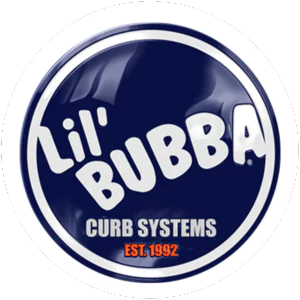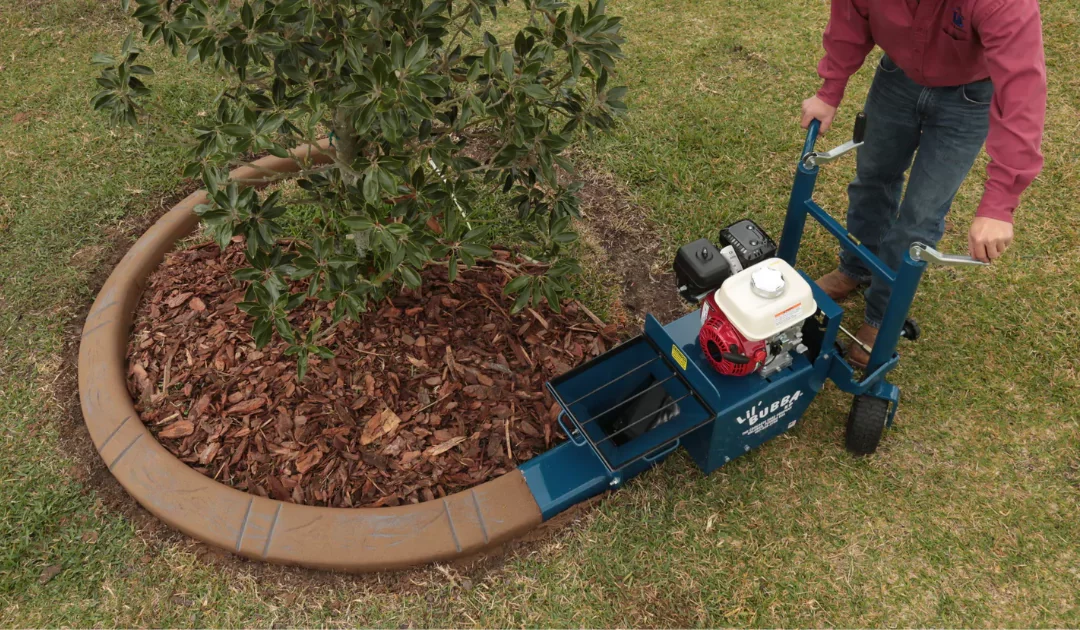Cement Border Machines, Explained: What They Are and Why They Matter
If you’ve ever looked at a clean, continuous concrete edge along a flower bed or driveway and wondered how it’s made — meet the cement border machine. Also called a concrete curbing machine, this tool is a game-changer for anyone working in landscaping, hardscaping, or starting a curbing business.
In plain terms: it takes a fresh concrete mix and squeezes it out in a smooth, consistent border — right where you want it. No forms, no fuss, just a clean curb that looks like it was cut with a knife.
Let’s break down how it works, what types are out there, and what to look for if you’re thinking of investing in one.
How Does a Cement Border Machine Work?
The basic process is pretty straightforward:
- Load the concrete mix – A specific mix that’s not too wet and not too dry is fed into the machine’s hopper.
- Extrude the curb – Inside the machine, an auger pushes the mix through a die, forming the curb’s shape.
- Lay the border – As the machine moves forward, it lays a continuous ribbon of concrete directly onto the prepared ground.
Because the process is so smooth and consistent, it’s possible to lay hundreds—or even thousands—of feet of curbing in a single day. That’s why this equipment has become a must-have for professional landscapers and curb installation crews.
Types of Cement Border Machines
Not all concrete curbing jobs are the same, and not every machine is built for every type of project. Here’s a breakdown of the main types so you can choose the right one for your needs.
Walk-Behind Cement Border Machines
This is the go-to type for most residential or light commercial work. These machines are compact, easy to maneuver, and designed to be operated by one person. They’re great for landscape edging, decorative borders, and mid-size projects.
Brands like Lil’ Bubba offer walk-behind models built with high-powered engines, user-friendly controls, and durable construction. They’re ideal for both new contractors and experienced professionals who want performance and reliability in one package.
Ride-On Cement Border Machines
If you’re working on larger commercial jobs—like parks, long sidewalks, or public developments—ride-on curbing machines offer a big productivity boost. The operator sits and steers while the machine lays down large sections of concrete curb without much physical strain.
These machines are built for long-distance performance and high output, making them a smart choice for businesses tackling major projects.
Curb & Gutter Machines
For roadwork or commercial infrastructure, curb and gutter machines are a completely different class. These machines handle heavier, more structural curb shapes and are often used by municipalities or contractors working on large-scale developments.
What to Look for in a Cement Border Machine
If you’re considering purchasing a machine, these features should be at the top of your checklist:
Reliable Engine Power
A strong, dependable engine ensures your machine can handle dense mixes and tough job site conditions without stalling or struggling. Most professionals prefer engines like the Honda GX series for this reason.
Smooth and Steady Drive
The movement of the machine directly affects the quality of the finished curb. A solid, well-designed drive system provides steady motion, which means clean, professional-looking results without interruptions or uneven edges.
Heavy-Duty Construction
This is concrete work—it’s not easy on equipment. Look for machines made with thick-gauge steel, strong welds, and wear-resistant parts that will last through daily use and rough conditions.
Operator-Friendly Design
Simple controls and ergonomic design can save time and reduce fatigue. Whether you’re training someone new or running the machine yourself, having intuitive, comfortable operation matters more than you might think.
Quick-Change Die System
Being able to swap out dies quickly gives you flexibility. Whether you’re doing commercial curbing one day and decorative landscape edging the next, changing profiles should be fast and easy.
Efficient Hopper Design
Clogs and uneven concrete flow slow you down. A well-designed hopper keeps the mix moving smoothly to the auger, reducing downtime and frustration.
Ease of Cleaning and Maintenance
Concrete sticks to everything, so cleaning up at the end of each job is essential. A good machine makes this process easier, saving you time and protecting your investment in the long run.
How to Get the Most From Your Curbing Machine
Even the best equipment can underperform without the right techniques. Here’s how to make sure your machine delivers top results every time.
Use the Right Concrete Mix
The consistency of your mix is everything. If it’s too wet, the curb won’t hold its shape. Too dry, and the machine will jam. Getting this right makes all the difference—and manufacturers like Lil’ Bubba offer training to help you dial it in.
Prep the Ground First
A clean, compacted, and level surface sets the foundation for a strong curb. Don’t skip this step. A little extra prep up front saves you rework later.
Invest in Training
Knowing how to run your machine the right way helps you avoid mistakes, wasted material, and equipment damage. Many suppliers offer training programs to walk you through everything from setup to finishing techniques.
Stay on Top of Maintenance
Keep your machine clean and lubricated. Concrete buildup can damage parts and slow down production. Regular maintenance ensures your machine stays in top shape for years.
Ready to Transform Landscapes and Build a Thriving Business With the Ultimate Cement Border Machine?
Explore Lil’ Bubba’s cutting-edge concrete curbing equipment and discover how our quality and support can elevate your services today!


Recent Comments